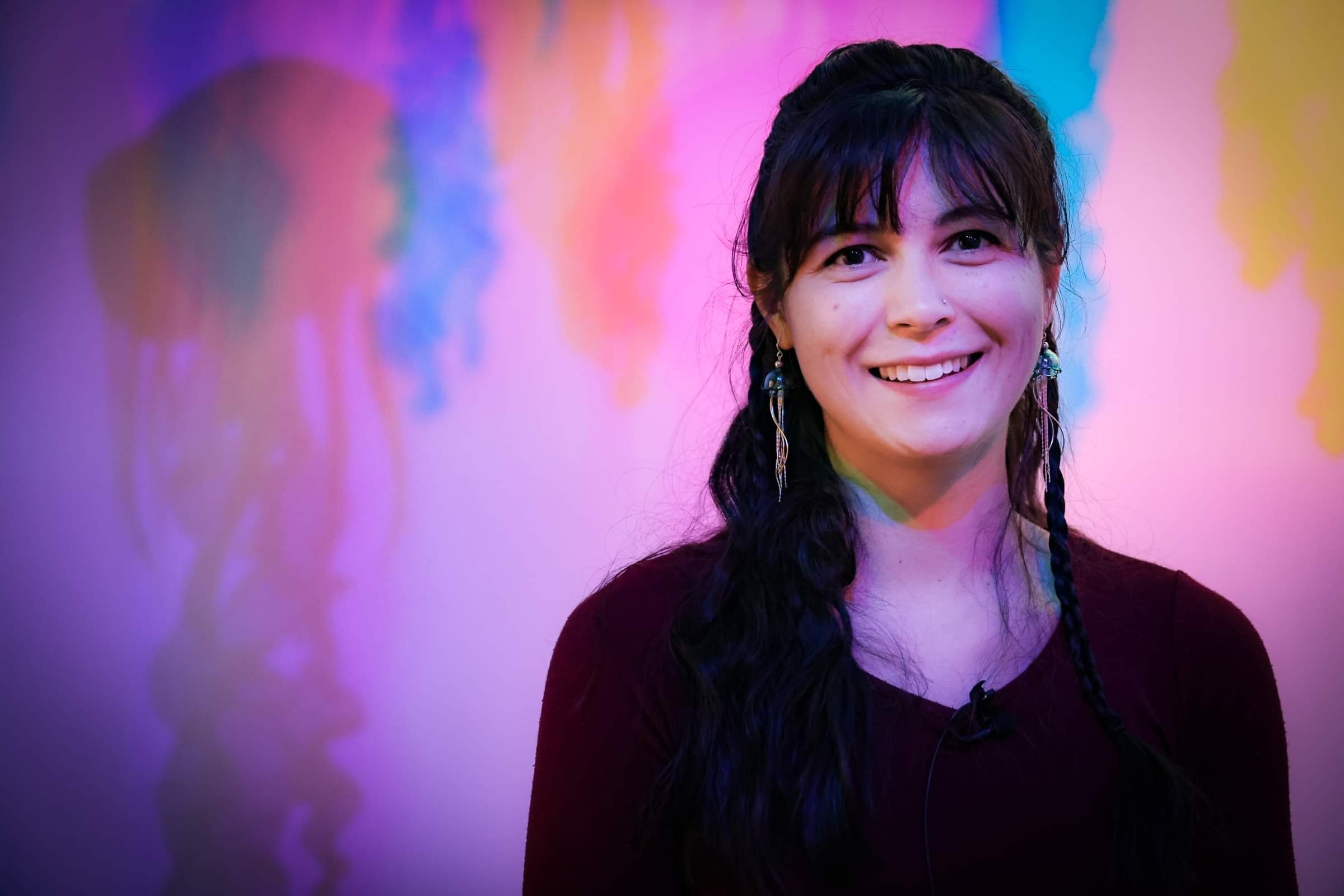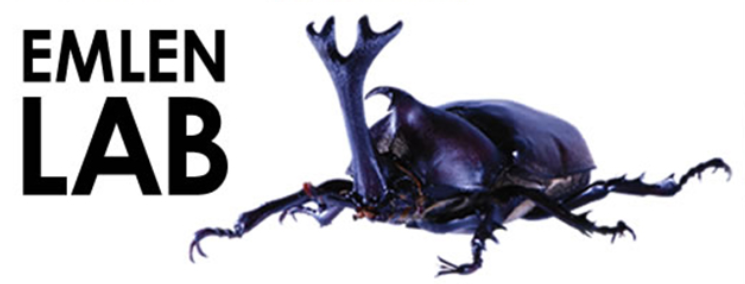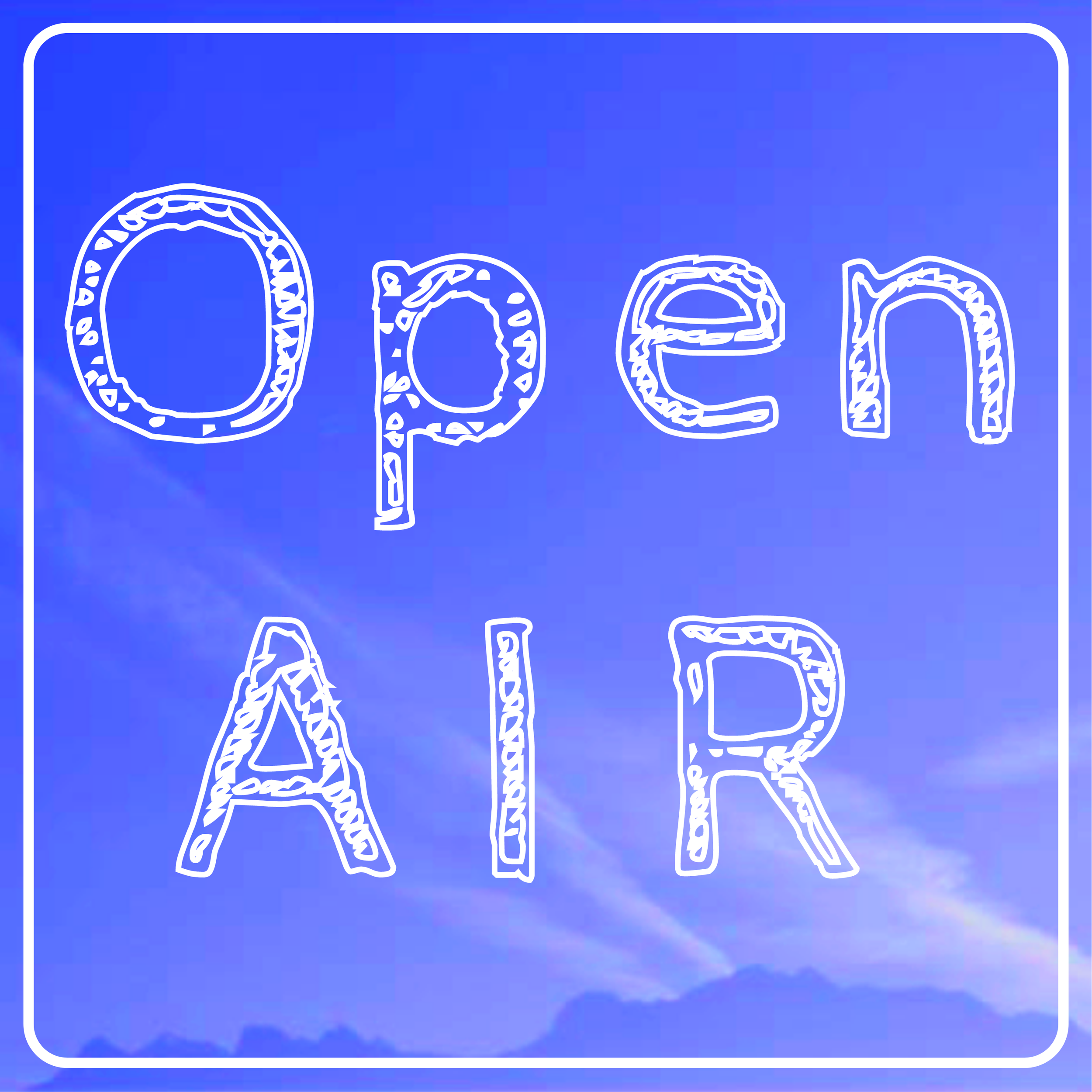Julynn Wildman: EMBODIMENT
“Movement has given me an understanding of the world and my place in it that I want to share. When I move, I want to move my audience.”
2022 Artist-in-Residence at Evolutionary Biology Emlen Lab
Julynn holding an insect belonging to the stick insects species
How was your experience as an Open AIR Artist-in-Residence?
I thoroughly enjoyed my time as an Open AIR Artist-in-Residence. Open AIR dedicates so much to the success of the artists-in-residence, and I loved the glimpses I got into the lives of other artists in the community. It was incredibly valuable to me to have the time and space to dedicate my mind, body, and spirit to a full exploration of the site, and I felt a deep permission to follow ideas, impulses, and whims. I so appreciated having a space to dance, a studio for material creation, a space to live, and a lab full of interesting insects and people. Everyone at Open AIR and at the lab were supportive and enthusiastic, and that really cultivated exploratory flow in a way that allowed me to branch out of my comfort zone into new subject matter and new media. As a person who was not previously a bug aficionado, this was the first time I’ve had extended one-on-one time with most of the critters. And boy, there’s no better way to appreciate a millipede than have it crawl on your hand. I have to admit that during site tours, I was trying to mask my anxiety about the gargantuan stick insects being studied by one of the graduate students in the lab, but by the midway point of my residency, I actually confidently held one!
Screenshot from a video of Leaf bug movement overlayered with Julynn’s interpretive movement
What was your research process during this time?
My research process was trifold: firstly, I spent a lot of time in the Emlen Lab looking at beetles and capturing images and videos of a variety of insects. I spent a lot of time watching leaf insects interact with their environment (leaf insects freeze when their environments are still and move when they feel camouflaged by outside movement, so I had a lot of leaf insect dance parties). I spent a good amount of time looking for answers to newfound bug questions in books from the lab and the library and pestering Doug or the nearest graduate student.
For the second part of my process, I spent time in the dance studio synthesizing my observations and research into movement. For example, I observed the movement of leaf insects that have evolved to mimic the leaves in their environment. Taking this to the studio, I used ideas of dimension, retrograde, repetition, and segmentation to explore and create ‘leaf-life’ movement. I also included some beetle dance workshops to share some explorations with members of the community.
The third part of my process was sculptural; I was inspired by Doug Emlen’s research into animal weapons, specifically his point that beetle weapons are proportionately the largest in the animal kingdom. The most impressive trophy elk might have a rack up to 5% of its body mass, but a male rhino beetle’s horn might be close to a third. This part of my process began as humorous musings: imagine a bull elk with antlers six times the size they are now. Imagine a rhino beetle trophy if its head were the size of a bull elk. Wouldn’t it be funny to make a horn for a human that was a third of its mass? But the flip side of these jokes was that making these sculptures was a fantastic way to visualize an extreme that, to many humans, seems minuscule. And furthermore, what better way to invite an audience to imagine what life might be like for a critter of these proportions? I used recycled cardboard as a building material to explore and create three different suits of ‘armor.’ This allowed me a lot of flexibility as I experimented with design and allowed the ultimate products to be lightweight enough to wear.
Beetle armor - carboard creations by Julynn
What are you up to now (post Open AIR)?
Part of the excitement of this residency was meeting other interested folks, and right now, I am working with Jessi Harvey and Doug Emlen to deepen our collaboration into an original performance of dance and music based on the research at the Emlen Lab. The residency this summer was amazing, and it feels like just the tip of the iceberg - I am really excited to see what comes next from our collaboration. I would say more, but I want it to be steeped in mystery and intrigue (also, we are still working out the details).
Screenshot from a video of Leaf bug movement overlayered with Julynn’s interpretive movement
Have your material choices changed over the years?
As a dancer, the biggest change in my material is the thrilling odyssey that is aging. I may have similar tendencies, similar patterns, but I am in no way the same body as I was ten, five, even two years ago. It’s not all bad - I’ve mellowed, become more judicious, but am probably still reckless compared to me in a decade.
Jokes aside, I love dance and movement for so many reasons, as a product and a process, but sometimes dance can feel like visual spectacle: fun, entertaining, even fantastic, but always hinged on performers entertaining audiences. I don’t always feel satisfied with this. Movement has given me an understanding of the world and my place in it that I want to share. When I move, I want to move my audience.
This lofty goal has expanded how I think of generating and sharing movement. In recent years, I’ve started opening up my process to larger community involvement, shaping the spaces that I perform it, and incorporating sculptural components into performance/presentation. I still think of movement as my primary media; I just happen to use other materials like cardboard, paper, and fabric to help create experiences that might speak to an audience’s own embodiment. Everyone in an audience has a body; can I create the space for an audience to be active and embodied? Maybe wearable, human-sized costumes can invite you to think about what it would be like to have a giant horn, even if you decide not to put it on. Maybe demarcating a space with fabric waves can invite viewers to move in and around the gallery instead of watching in stillness. Maybe interactive writing activities in the lobby before and after a show can invite the audience to reflect on their experience. It’s important to me that these are invitations, not mandates.
On the other hand, sometimes I just want to make and share cool, interesting, or silly dances. Sometimes I draw pictures, dabble in a new media, write poems or songs just for the heck of it with no intentions of poking the edges of anyone’s embodied experience. These might not be shared formally, but this practice is vital to my creative practice. Sometimes I need to give my inner creator free reign and force my inner editor to take a spa day. Allowing unfettered, expectation-less creation helps me explore the robust contrasts between levity and gravity, intricacy and brevity, material substance and ethereal dance.
Julynn’s Beetle armor in action
When did you first begin working with this medium, media?
I have been moving and making since I can remember - I remember fiddling with the natural materials around my childhood home like driftwood, grass and mud. I come from a line of recreational re-creators, the type to make a Christmas ornament from a burnt-out lightbulb and a dish soap top, to see frog shaped garden statue in what others might mistake for a simple river rock, or to cobble together a toy from discarded woodworking scraps. This resourcefulness has greatly informed my material choices for my sculptural work, and focusing on recycled and reclaimed material speaks to me in many ways: it’s an active practice of creative problem-solving and resourcing, it gives me wiggle room for the informality of my visual arts practice, I can create without being the headwaters of a new waste stream, I can show that creative practice does not always require expensive tools and products, and I can finally get rid of some of those damn egg cartons.
Julynn’s beetle armor in motion
Can you talk about the difference between being a maker/director of your own work and being a viewer?
For me, sharing art feels like the completion of a cycle - it has been created, cultivated, and ultimately given. And like any gift, once given, it’s out of the control of the giver to dictate how it is received (although I really, really hope you like it).
A large part of my creative process comes from investigation and research. I use movement and the ideas of embodiment to create and inspire, but I don’t feel that my work needs to be seen as ‘about’ the research - I try to avoid being outwardly didactic and give a viewer the opportunity to engage with the research as a complement - not a prerequisite - to enjoying an aesthetic experience.
There are many choices that I make in my work that may not be gleaned from an outside perspective. For example, when choreographing for a crocodile character, I included flip-up shades in the costume as a reference to its nictitating membrane (the clear third eyelid found in various animals). The shades were highlighted for maybe two seconds, and I expect that most viewers didn’t automatically grasp their reasoning/meaning/significance, but this detail felt important, and I can only hope it contributed to an overall feel of an intentional, deliberate world.
Another way movement lives differently in a maker versus a viewer is that things don’t always look how they feel and vice versa. Sometimes the most foreign, awkward movement is the most interesting, and sometimes you spend hours refining a really delectable combination that is the visual equivalent of cold, congealed oatmeal. Choreography, especially from movement research, requires a balance between being true to what you discover and making curatorial choices on how it is presented. An audience will only be privy to a final product, not the whole research-refine-repeat process it took to get there, and this makes a difference in how they perceive it. I think most dancers have experienced some kind of out-of-body self-criticism when watching a recording of a performance - I thought my leg was straight, but it doesn’t look like that, I didn’t know my feet weren’t pointed, etc. But watching a recording doesn’t give a dancer a ‘true’ audience experience any more than a parent visitation day gives a parent a ‘true’ Kindergarten experience - your perception is specific to your context, to your relationship to the work, your experience, and history with it. Neither is superior or inferior, they both need to exist in order for an art to complete its cycle.
Julynn Wildman
To learn more about Julynn, visit her website www.embodypraxis.com









